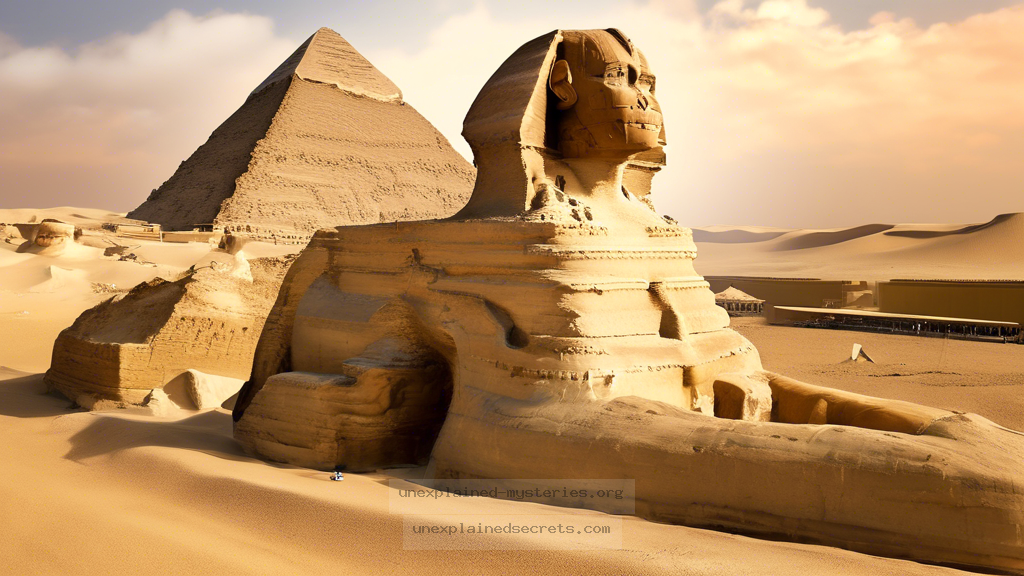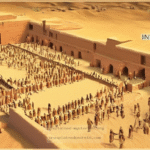What Secrets Lie Beneath the Sphinx of Giza?
What Secrets Lie Beneath the Sphinx of Giza?
The Great Sphinx of Giza, an iconic symbol of ancient Egypt, has fascinated scholars, archaeologists, and tourists alike for centuries. But beyond its majestic façade and enigmatic smile, lies a labyrinth of questions that have yet to be answered. What secrets does this ancient monument hold beneath its surface? This question is more than a mere curiosity; it pertains to our understanding of ancient civilizations, their capabilities, and perhaps even their hidden knowledge. The Sphinx’s mysteries may reveal insights into the technological prowess of ancient Egyptians and their connection to the cosmos, as well as challenge established historical narratives. Let’s delve into the layers of this enigma.
Historical Context: The Sphinx Through Time
The Great Sphinx, believed to have been constructed during the reign of Pharaoh Khafre around 2500 BCE, stands at an impressive 66 feet tall and 240 feet long. Its face, thought to represent the Pharaoh, gazes towards the rising sun, symbolizing rebirth and regeneration. Throughout history, the Sphinx has undergone various transformations and restorations, each reflecting the era’s cultural significance. Ancient texts, such as those by Herodotus, hint at its long-standing existence, but much remains speculative.
As Egyptologists explore the Sphinx’s origins, they often reference the Sphinx’s alignment with the stars and its potential role in ancient astronomical observations. Some theories suggest that it was part of a larger complex of pyramids and temples, all serving a purpose beyond mere tombs. The Sphinx’s erosion patterns even indicate that it may have been subjected to significant rainfall, which challenges the timeline of its construction.
Core Concepts: Theories Surrounding the Sphinx
Theories about the Sphinx’s purpose and origins range widely, from being a guardian of the Giza plateau to a representation of the sun god Ra. Some scholars propose that the Sphinx was part of a grander spiritual landscape, acting as a bridge between the earthly and the divine. Others delve into its potential connections with lost civilizations, suggesting that the Sphinx may have been built long before the conventional timeline of Egyptian history, possibly as far back as 10,000 BCE.
Theories of hidden chambers and tunnels beneath the Sphinx have also emerged, spurred by the idea that ancient Egyptians possessed advanced knowledge of architecture and engineering. In particular, the work of researchers like Dr. Zahi Hawass has sparked debate about the existence of undiscovered cavities, which could potentially hold artifacts that would reshape our understanding of ancient Egypt.
Practical Implications: What Lies Beneath?
Investigation into the Sphinx has been extensive, employing various methods such as ground-penetrating radar (GPR) and seismic studies. In 1996, a team of researchers led by Dr. Hawass utilized GPR to scan the area around the Sphinx, revealing anomalies that suggested the presence of hollow spaces. These findings have led to further explorations, although many remain cautious about making definitive claims without physical evidence.
Moreover, the implications of discovering hidden chambers could extend beyond mere artifacts. It could offer profound insights into the religious practices, daily lives, and technological capabilities of ancient Egyptians, perhaps even revealing the secrets of their advanced knowledge of astronomy and mathematics.
Alternative Perspectives: Skepticism and Controversy
Additionally, the narrative of lost civilizations, while captivating, can sometimes overshadow the achievements of known cultures. Critics urge for a balanced view that recognizes the incredible advancements of the documented ancient Egyptians without resorting to the mystique of hypothetical predecessors.
Common Misconceptions: Debunking Myths
One prevalent myth surrounding the Sphinx is that it was once buried entirely beneath the sands, with only its head visible. While it is true that the Sphinx has experienced significant erosion and burial over the centuries, it has always been a prominent feature of the Giza plateau, not merely a lost artifact waiting to be unearthed.
Another misconception is that the Sphinx’s nose was deliberately destroyed by Napoleon’s troops. In reality, historical records indicate that the nose was likely damaged centuries earlier, possibly by iconoclasts or natural erosion. This highlights the importance of distinguishing between legend and fact when discussing ancient artifacts.
Best Practices for Investigation: Approaching the Mystery
For those intrigued by the mysteries of the Sphinx, approaching the investigation requires a multifaceted strategy. Here are some best practices:
- Engage with credible archaeological studies and publications.
- Participate in guided tours led by knowledgeable Egyptologists to gain insights into the historical context.
- Utilize technological advancements in archaeology, such as GPR, to contribute to ongoing research.
- Maintain an open mind while critically assessing the evidence presented.
By fostering a deeper understanding of the Sphinx and its cultural significance, researchers and enthusiasts alike can contribute to the broader discourse surrounding ancient Egyptian civilization and its mysteries.
Future Developments: Ongoing Research and Exploration
The quest to uncover the secrets of the Sphinx is far from over. Ongoing research continues to explore the potential for undiscovered chambers and artifacts. Recently, collaborations between international teams and Egyptian authorities have facilitated new excavations and technological surveys of the Giza plateau. These efforts aim not only to understand the Sphinx better but also to preserve it for future generations.
As advanced imaging techniques and archaeological methodologies evolve, there is hope that new discoveries will shed light on long-standing questions. Furthermore, the increasing interest in ancient technologies and lost knowledge may inspire innovative approaches to deciphering the mysteries of the Sphinx and its surroundings.
Conclusion: Unveiling the Enigma of the Sphinx
The Great Sphinx of Giza stands as a testament to the marvels of ancient engineering and the mysteries that continue to captivate our imagination. From the debates surrounding its origins and purpose to the potential discoveries hidden beneath its stone exterior, the Sphinx challenges our understanding of history and ancient civilizations.
As research progresses and technologies advance, we may yet uncover the secrets that lie beneath this enigmatic monument. Whether through archaeological exploration, technological innovation, or scholarly discourse, the quest to understand the Sphinx is a journey of discovery that not only enriches our knowledge of the past but also inspires future generations to explore the mysteries of our world. The question remains: what secrets lie beneath the Sphinx of Giza, waiting to be unveiled?
Other Articles
Recent Posts
- What Happened to Flight MH370? The Conspiracy Theories That Still Haunt Us
- What Secrets Lurk Within the Walls of the Infamous Trans-Allegheny Lunatic Asylum?
- What Evidence Supports the Existence of Bigfoot in the Pacific Northwest?
- What Happened to the Indus Valley Civilization? Unraveling the Mysteries of Ancient Urban Life
- Can Telepathy Be Scientifically Proven Through Laboratory Evidence?







